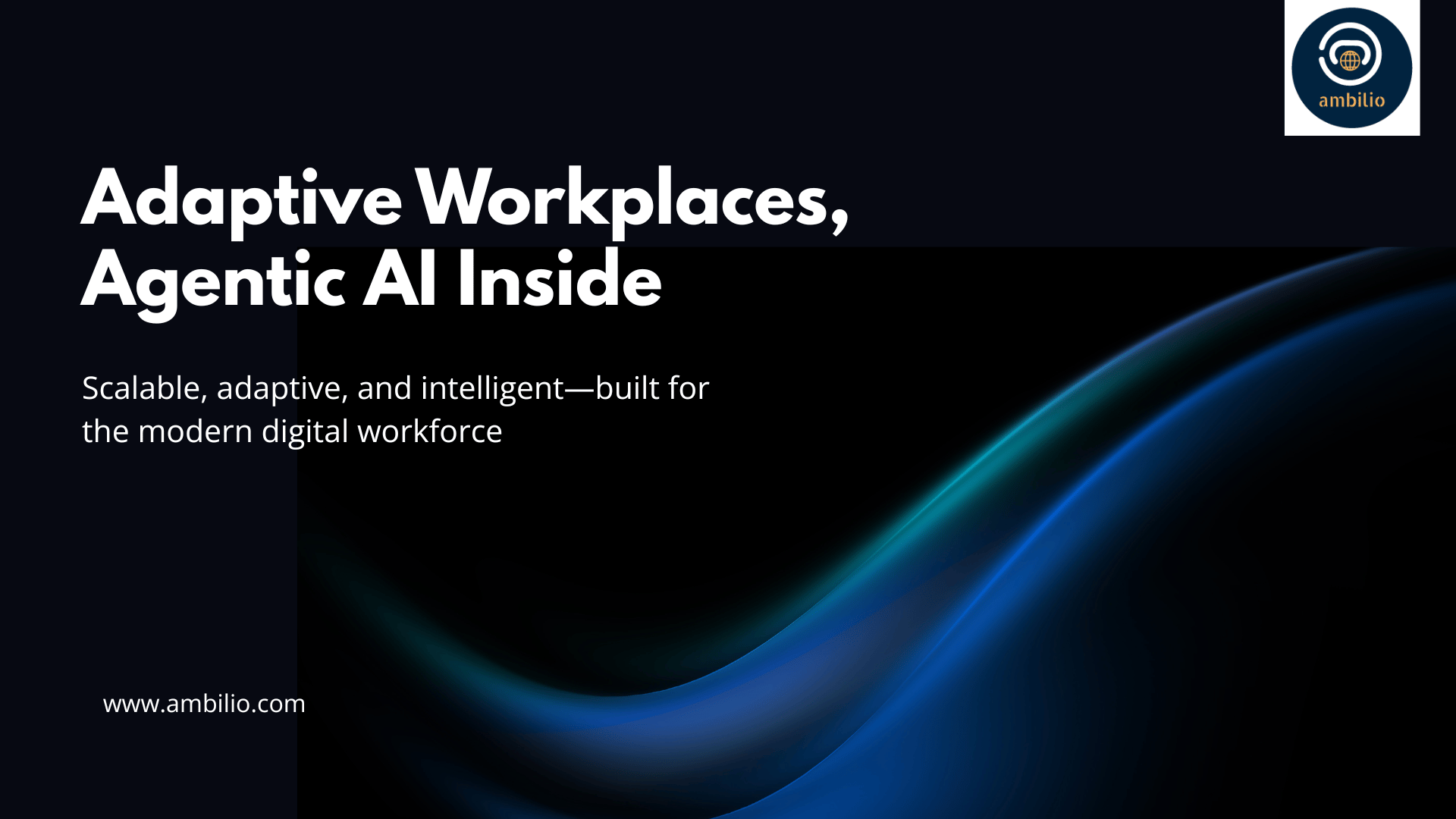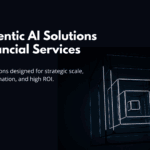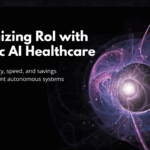As industries evolve under the pressures of globalization, digitization, and workforce transformation, the concept of a workplace powered by intelligent, autonomous systems has moved from fiction to necessity. The Agentic AI Enhanced Workplace is not just a vision of the future—it is an emerging reality that blends the capabilities of autonomous agents with human oversight to redefine how businesses operate. This article explores the concept of an Agentic AI Enhanced Workplace, its strategic benefits, applications across various industries, implementation considerations, and the shift in workforce dynamics it brings. With a focus on real-world relevance, we will unpack how enterprises can prepare to embrace and lead this transformation effectively.
Understanding the Agentic AI Enhanced Workplace
The Agentic AI Enhanced Workplace is a dynamic environment where AI-powered agents perform tasks, make decisions, and collaborate with humans across departments. Unlike traditional automation, which typically executes predefined rules or workflows, agentic AI systems are designed to exhibit autonomy, proactiveness, and context awareness. These agents can learn from data, adapt to new situations, and interact with both digital systems and human users.
In such a workplace, AI agents don’t just assist—they act. Whether it’s handling a customer support request, optimizing a supply chain process, or generating data insights, the agent can sense, decide, and act in real time. The result is a more responsive, scalable, and intelligent operation that supports human workers instead of replacing them.
Key Characteristics of Agentic AI Systems in the Workplace
To understand the foundation of an Agentic AI Enhanced Workplace, it’s important to recognize what sets agentic AI apart:
- Autonomy: Agents operate with a degree of independence. They can initiate actions without waiting for human prompts, responding to changes in the environment or data signals.
- Contextual Awareness: These systems interpret the environment and context—such as user behavior, business rules, and external events—to determine the most appropriate actions.
- Adaptability: Through continuous learning, agentic systems refine their decision-making capabilities, improving over time based on feedback or outcomes.
- Collaboration: Agentic AI systems are built to work not only with other AI systems but also with humans, creating hybrid work models where decision-making and execution are shared.
Industry Applications of an Agentic AI Enhanced Workplace
1. Manufacturing and Supply Chain
In industrial operations, agentic AI systems can manage production lines, monitor equipment health, and orchestrate logistics in real time. For example, predictive maintenance agents analyze machine sensor data to predict failures and schedule repairs autonomously. Supply chain agents dynamically reroute shipments or switch suppliers based on delays, optimizing delivery timelines and reducing waste.
2. Financial Services
Banks and insurance firms are increasingly deploying autonomous agents to support operations like fraud detection, risk management, and portfolio analysis. In an Agentic AI Enhanced Workplace, agents can monitor transactions, detect anomalies, suggest mitigation strategies, and even communicate with clients for document verification—all without human intervention unless required.
3. Healthcare
In clinical settings, virtual agents can handle administrative functions such as appointment reminders, insurance processing, and post-visit follow-ups. More advanced systems may support diagnostics by reviewing imaging data, patient records, and medical literature to provide decision support to physicians. This allows clinicians to focus more on patient care than paperwork.
4. Sales and Customer Service
Agentic AI can drive proactive outreach to customers, prioritize sales leads, and personalize engagement strategies. In customer support, agents can resolve low-complexity queries, escalate critical issues, and learn from each interaction to refine future responses. The result is faster resolution times and more satisfied customers.
5. Human Resources and Internal Operations
Agents can screen job applications, schedule interviews, assist in onboarding, and guide employees through internal policy navigation. They also support employee well-being by tracking workload patterns and nudging managers or employees about burnout risks or productivity declines.
Benefits of an Agentic AI Enhanced Workplace
The business value of embedding agentic AI across the workplace is significant. Key benefits include:
- Operational Efficiency: Agents perform repetitive, rule-based, and time-sensitive tasks faster and more accurately, freeing human talent for strategic roles.
- Scalability: Businesses can scale operations without proportional increases in human resources. Agents can handle volume surges, such as peak season demand or crisis response, with ease.
- Improved Decision-Making: Real-time insights, context-aware actions, and cross-system data integration enable better and faster decisions.
- Employee Empowerment: By removing mundane tasks, agentic AI allows employees to focus on creative, relational, or strategic work, increasing job satisfaction and reducing burnout.
- Customer Experience: Enhanced responsiveness, personalization, and 24/7 service availability lead to improved customer satisfaction and loyalty.
Strategic Considerations for Implementation
Transitioning to an Agentic AI Enhanced Workplace requires more than just deploying AI tools. It involves foundational shifts in how work is structured, monitored, and governed.
- Infrastructure Readiness: Organizations need a robust digital infrastructure—interoperable systems, cloud environments, and APIs—to allow seamless agent operations.
- Data Governance: High-quality, well-governed data is essential. Agents depend on accurate data inputs to function effectively, and organizations must manage data privacy, bias, and security proactively.
- Human-in-the-loop Design: Despite autonomy, agents should be built with checkpoints that allow human oversight, especially in high-stakes or ambiguous scenarios.
- Organizational Change Management: Upskilling employees to interact with, monitor, and co-work with agents is crucial. Clear communication about roles, benefits, and ethical use builds trust and adoption.
- Cross-functional Alignment: Since agentic AI systems often operate across silos, cross-departmental alignment on goals, processes, and tools ensures effectiveness and avoids redundancy.
Challenges and Ethical Considerations
While the potential is immense, the transition to an Agentic AI Enhanced Workplace presents challenges:
- Job Displacement Fears: Employees may fear automation will reduce headcount. Organizations must reinforce that agentic AI is augmentative, not replaceable, and support reskilling.
- Bias and Fairness: AI agents, if trained on biased data, may reinforce discriminatory practices. Ongoing audits and ethical AI design are essential.
- Over-reliance on AI: Critical thinking and human judgment must remain integral. Agents should not be treated as infallible decision-makers.
- Security Risks: Autonomous systems could be exploited if not properly secured, especially when connected to sensitive or external systems.
The Road Ahead
The Agentic AI Enhanced Workplace represents a major inflection point in how organizations operate, interact, and grow. It calls for a shift in mindset—away from fragmented task automation toward an integrated, intelligent, and adaptive work environment. For enterprises willing to invest in the infrastructure, skills, and governance required, the payoff is a more agile, innovative, and human-centered organization.
As industries continue to evolve, the question is not whether workplaces will adopt agentic AI—but how thoughtfully and strategically they will do so. The early movers will not only gain operational advantages but also redefine what productivity, collaboration, and impact look like in the digital age.



